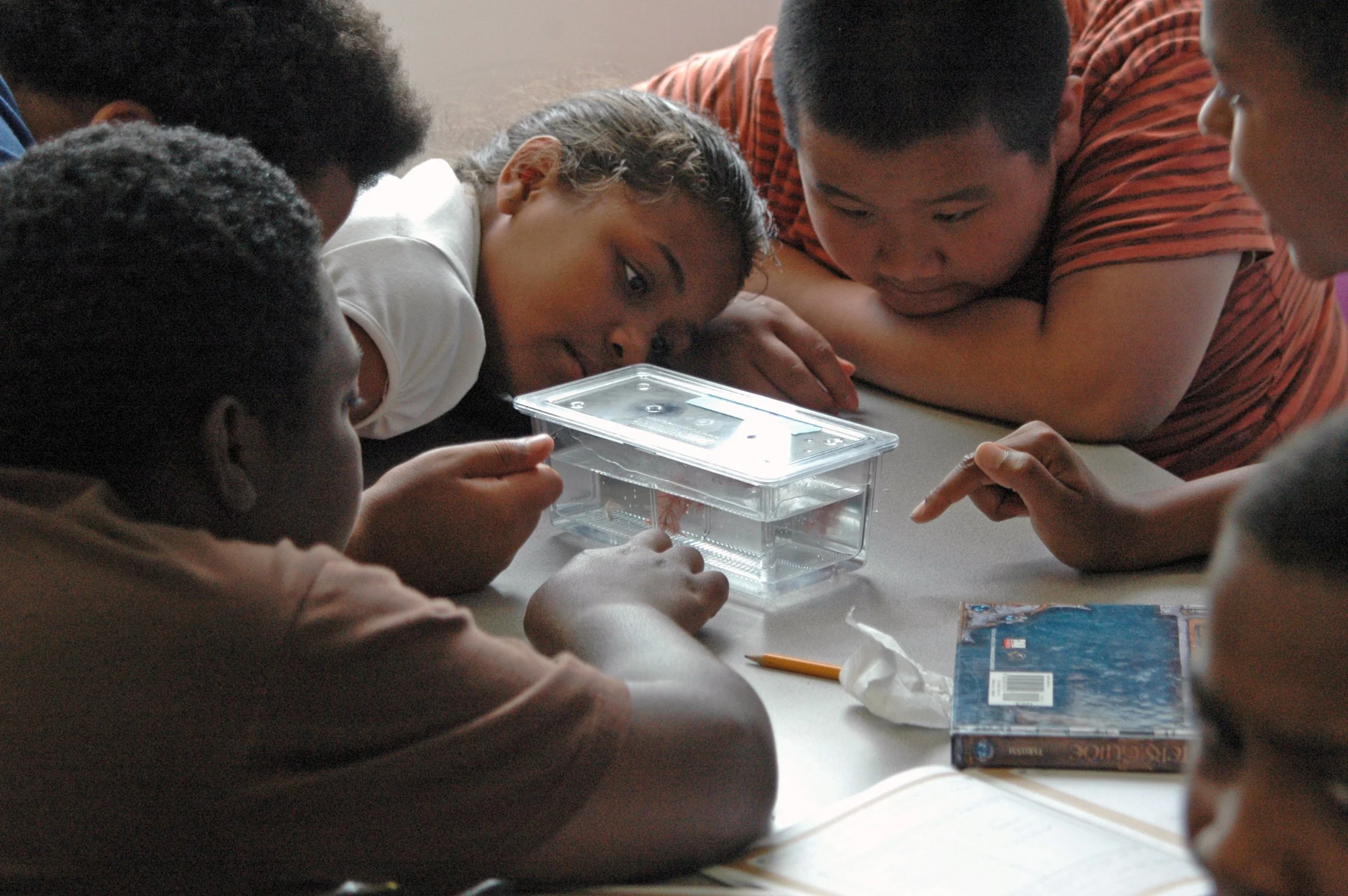
Project BioEYES
Our flagship program is a weeklong, hands-on science project that brings live zebrafish into the classroom. Students mate the fish, then raise the resulting embryos until they hatch out as clear, free-swimming larvae with beating hearts that can be seen under our provided microscopes. This program offers exemplary science curriculum in cell biology, genetics, and the scientific method, and is available for 2nd/3rd, 4th/5th, 7th/8th, and high school grades.
A week of hands-on science
On the first day of Project BioEYES, the BioEYES Outreach Educator brings all of the necessary equipment to the classroom, including the sophisticated microscopes students use to observe and study live zebrafish adults and their offspring. Each student is invited to assume the role of “junior scientist” in an important experiment. When given this role, students become energized with curiosity and excited about the activity. Students split into small groups, set up fish tanks, and choose mating pairs of zebrafish. Over the course of the week, students observe zebrafish behavior and follow the development of resulting embryos. Each day, just like research scientists in the laboratory, students hypothesize and test ideas, ask questions, record findings, and think critically about the impact scientific research has on our community. Throughout the experiment, the idea of the stereotypical scientist is broken down and students are encouraged to see that science is open to each of them as a career path.
The Nano Program (2nd/3rd grades)
Our youngest level of Project BioEYES focuses on basic anatomy, habitats, life cycles, and similarities and differences between humans and fish. Students practice following directions, learn the uses of scientific equipment, and make simple observations with lots of drawing.
The Micro Program (4th/5th grades)
Upper elementary school BioEYES students concentrate on comparisons between humans and zebrafish, including discussions about how the fish’s natural tropical environment is similar to and different from where the students live, what human and zebrafish embryos both need to survive and where they get it, how gills are different than lungs, and the function of our respective hearts.
The Intermediate Program (7th/8th grades)
Students participating in the 7th/8th grade experiment mate a zebrafish with a pigment mutation with a wildtype zebrafish, hypothesizing on the phenotypes of the resulting embryos. This is used to introduce or review the concepts of basic Mendelian genetics, dominant and recessive traits, and Punnett squares.
The Advanced Program (High School)
In the high school experiment, students perform more complicated genetic crosses by adding heterozygous carriers of the pigment mutation. This creates a more in-depth Mendelian experiment, where the students must determine the genotype of their original adult fish by observing the phenotypes of the offspring. Along the way, students discuss higher-level concepts such as stem cells and vertebrate development.
